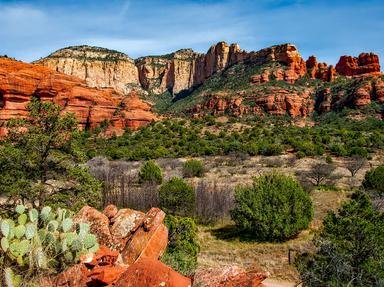Quiz Answer Key and Fun Facts
1. Oldest continuously-inhabited settlement in Arizona
2. Largest capacity reservoir in the U.S.
3. Attraction located at the bottom of the Grand Canyon
4. Cliff dwellings in north-central Arizona
5. Attraction located at Lake Havasu City
6. Location of the Desert Botanical Garden
7. Attraction located on the Navajo Nation
8. North-central Arizona city known for its red rocks
9. First European settlement in Arizona
10. Location of the westernmost Civil War Battle
Source: Author
PDAZ
This quiz was reviewed by FunTrivia editor
spanishliz before going online.
Any errors found in FunTrivia content are routinely corrected through our feedback system.


